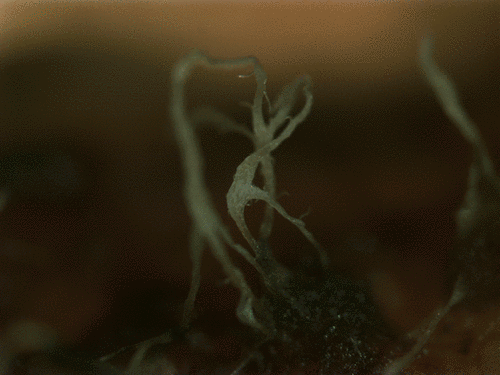
mart worms! The nematode Pristionchus pacificus uses a clever strategy for collective host finding: In its dauer state, the larvae build waving towers of up to 1000 individuals by synthesizing a wax ester that covers the surface of the animal like an oily coat and enables them to stick to each other. This team effort maximizes the chance of the larvae attaching to a new host organism like the carcass of a beetle: It is almost like giving themselves a leg up to be able to reach an elevated spot with the tip of the tower.
The dauer stage is a stage of development that some nematodes enter under harsh conditions like heat or low food supply, and which actually pauses the animal’s development. Synthesizing the extremely long-chain polyunsaturated wax ester used as an adhesive for building the towers is restricted to larvae in the dauer stage. This is why researchers in the lab of Teymuras Kurzchalia named the large tower-like structures “dauer towers”. The oily, glue-like secretion was named “nematoil” by the Dresden researchers (from 'nematode-derived oil'). The orchestration of the tower assembly and the coordination of the collective waving motion are not yet understood.
Sider Penkov, Akira Ogawa, Ulrike Schmidt, Dhananjay Tate, Vyacheslav Zagoriy, Sebastian Boland, Margit Gruner, Daniela Vorkel, Jean-Marc Verbavatz, Ralf J Sommer, Hans-Joachim Knölker & Teymuras V Kurzchalia:
A wax ester promotes collective host finding in the nematode Pristionchus pacificus
Nature Chemical Biology (2014)